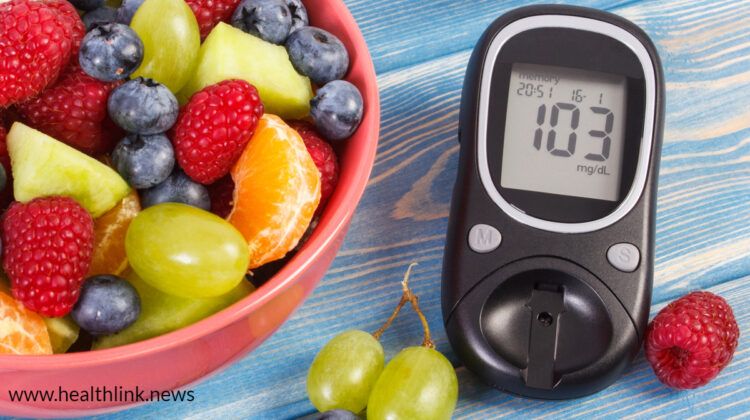Can We Eat Fruits if Have Diabetes?

What is Diabetes?
Diabetes occurs when your blood sugar or plasma glucose is too high or low. Insulin cannot function properly in the body without enough glucose. Cells do not receive the energy they need to function normally, leading to different health problems. A common distinction between types of diabetes is whether they are found during pregnancy (gestational diabetes) or acquired later in life (non-gestational diabetes).
Diabetes is a serious condition that, if left untreated, can lead to blindness and amputations. Type 2 diabetes develops when your body cannot make or use insulin well. Type 1 diabetes develops when your immune system destroys the cells in your pancreas that make insulin. Let us look at the different types of diabetes.
People with type 1 diabetes need to take insulin injections several times a day and give themselves daily blood sugar tests. People with type 2 diabetes may have insulin resistance (previously called adult-onset diabetes) and need to take oral medications or insulin injections.
Should we eat fruits if we have diabetes?
Fruits can be part of a healthy diabetes eating plan, but your choices depend on other dietary elements. When considering the impact of carbohydrates on your blood glucose control, think about how much fruit you plan to eat in one sitting, and whether it can fit into your carbohydrate budget while still providing the nutrients you need. Consider these factors when devising an eating plan that fits your needs and helps maintain healthy body weight.
Fruits should be a part of any diabetes diet. The carbs in fruits are contained in fruit sugars — fructose and glucose. These simple sugars are present in similar quantities (that is, they are equal) in many fruits, including apricots, berries, cherries, grapes, kiwi, mangoes, melons, nectarines, oranges, and peaches.
Fruit is an excellent way to get nutrition while satisfying your sweet tooth. The ADA advises you to count fruit as a carb in your meal plan. Fruits can be part of a healthy meal plan if you have diabetes. The fructose in fruit raises your blood sugar, but not as much as the carbohydrates in bread and potatoes do. Fruit can help to lower your blood pressure, boost your immune system, and help protect against disease. Eating whole fruit means that you get fibre from the skin, too.
Fruits for Diabetes is a nutritional guide that offers practical tips on how to work with fruits in your diet. It considers the potential health benefits of phytochemicals, vitamins, and minerals.
Fruit is delicious and nutritious, eating more fruit may benefit your health, especially if you have diabetes or heart disease. Fruit can help you manage your weight and reduce your risk of diabetes, cancer, and other serious health problems. Plus, some fruits are packed with fiber—another important heart-healthy nutrient.
Find out how fruit can be a healthy and satisfying part of an eating plan for people with type 2 diabetes.
Do you Know Fruit effect Blood Sugar?
Fruits are one of the healthiest and best-tasting things you can eat. But because they have carbohydrates, fruits will raise your blood sugar. So, it is important to count the carbs you eat and balance them with medicine, diet, and lifestyle choices.
If you have diabetes, it is important to know how much carbohydrate is in the fruit you eat. Fruits with 15 grams of carbohydrate per serving include:
1/8 cup raisins
3/4 cup blueberries
1/2 medium apple or banana
1¼ cup whole strawberries
1 cup cubed honeydew melon
1 cup blackberries or raspberries
You may already know that some fruits can help stabilize blood glucose levels. For example, apples are a low-glycaemic food that can be used strategically as part of a meal plan. And you may also have heard other foods are listed as “high” or “low” on the glycaemic index scale. It is true: Many fruits (and vegetables too) are high on the GI scale, but they have health benefits such as antioxidants and fibre that counter any blood-sugar spikes.
The Glycaemic Index (GI) is a measure of how quickly carbohydrates in foods are broken down into sugar in the body. Eating mostly low GI foods helps you keep control over your blood sugar. However, not all low-GI foods are good for you, as many can be high in saturated fat or cholesterol. A candy bar and a cup of brown rice have the same GI value.
Low-GI fruit portions are suitable for people with diabetes. A large serving of low-GI food will usually raise your blood sugar as much as a small amount of high-GI food. So, experts also use glycaemic load (GL), a measurement that involves portion size as well as the GI number, to give more details about these effects.
Healthy Ways to add Fruits to Your Diet
Small steps can make a big difference in your blood sugar levels. Be sure to:
Fruits are a low-carb way to enjoy sweetness but remember portion control is important! Add dried fruit to your diet. Two tablespoons of dried fruit have the same amount of carbs as a small apple.
Enjoy all kinds of fruit without having to worry about hidden carbohydrates. Choose fresh whole fruit or fresh frozen fruit when you can, as it is more nutritious than processed fruits.
Fruit is a healthy part of your diet but eating all that fruit can get expensive. Check the label before adding to the diet, dried and processed fruits are more affordable.
Fruit is healthiest when it is whole. But at the start of a meal, it may be one way to appease your sweet tooth and not send blood sugar soaring.
Fruit is a great source of fiber and vitamins like C, E, and K. A diet high in fruit may help prevent the development of diabetes because the antioxidants found in it can help slow down the oxidative process – the process which damages your cells and blood vessels. Spread your fruit out over the day. Instead of two servings for breakfast, have one at breakfast and another at lunch or as a snack.
Fruits for Diabetic People
Fruits can help manage blood sugar, lower blood pressure and cholesterol, and may even help you lose weight. That does not mean you can eat as much fruit as you want. Unlike fresh fruits, dried fruits and juices still have calories. Fruits tend to be high in natural sugars, especially cane juice and high-fructose corn syrup. Sugar alcohols like xylitol (made from fruits) are not included in the carb counts of foods.
When you have diabetes, it is important to keep your blood sugar levels in check.
Here are the healthiest fruits to help you do that:
Tomatoes: Tomatoes are very healthy fruit for people with diabetes. One cup of sliced or chopped tomatoes has 32 calories, 7 grams of carbohydrates, and 2 grams of fiber. Tomatoes also have a high amount of vitamins A and C. They are also a good source of Vitamin K.
Strawberries: Strawberries are sweet and tasty and low in calories, making them a healthy choice. One cup of whole berries has only 46 calories, 11 grams of carbohydrates, and 3 grams of fiber. Choose red over green for the highest levels of antioxidants, including ellagic acid.
Blackberries: You might be surprised to know that berries are one of the best fruits for people with diabetes to enjoy. Blackberries top the list. These little sweet treats possess an array of nutrients that make them incredibly healthy for you. One cup of raw berries has 62 calories, 14 grams of carbohydrates, and 7.6 grams of fiber.
Oranges: People with diabetes should avoid sugary fruits and eat more healthy fruits like oranges. Oranges are low glycaemic which makes them a very healthful option. The fiber in oranges helps you feel fuller longer which can help you eat less later. Enjoy two small oranges for breakfast with a cup of hot tea. One medium orange has 69 calories, 17 grams of carbohydrates, and 3 grams of fiber.
Fruits With Low-GI
Many fruits can help with a diabetes diet. Fruits have less sugar than other carbohydrate foods, and most are low-GI (55 or under), which means they cause a smaller rise in blood glucose levels. These include:
Apples
Oranges
Bananas
Mangoes
Dates
Pears
Fruits With High-GI
Fruits that are high on the GI scale can be part of a healthy eating plan for people with diabetes. If you are concerned about your blood glucose levels, always check with your doctor or dietitian first. These include:
Pineapple
Watermelon
